Workfare, Methodists & Grow Heathrow: Saturday 8th September 2012 was another day of travelling around London, with protests against forced unpaid work for benefit claimants in Camden and Brixton, Ghanaian Methodists celebrating at Victoria and then an open day at Grow Heathrow in Sipson from where a couple of buses took me home.
Day of Action Against Workfare – Camden & Brixton
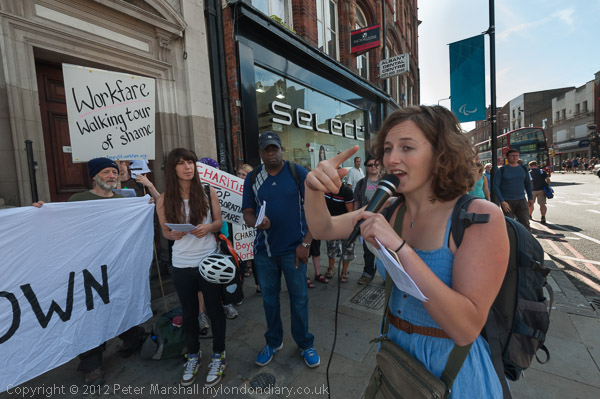
Boycott Workfare held a UK day of action targeted against charities and shops that take part in the government scheme of forced unpaid work which treats the unemployed as criminals. They also celebrated companies and charities that have withdrawn from the scheme.
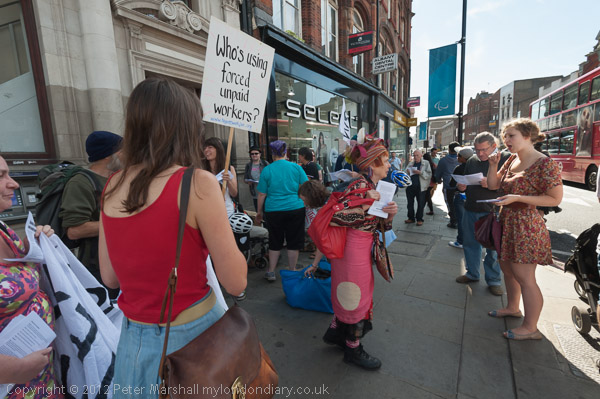
Although the scheme is described as voluntary those who refuse to take part or or whose participation is judged unsatisfactory face the loss of some or all of their benefits. Under harsh government targets the number of claimants being sanctioned had increased threefold over two years and in 2012 there were over half a million under sanctions. It’s work for nothing or lose your benefits.
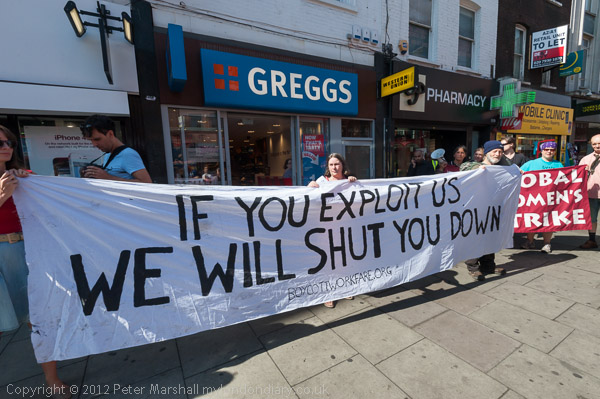
As Boycott Workfare pointed out, the four week Mandatory Work Activity scheme is the equivalent of a medium level community service order – such as might be given to someone found guilty of assault or drunken driving. And while the longest community service order a judge can give is for 300 hours, under some workfare schemes claimants are being forced to work without pay for 780 hours.
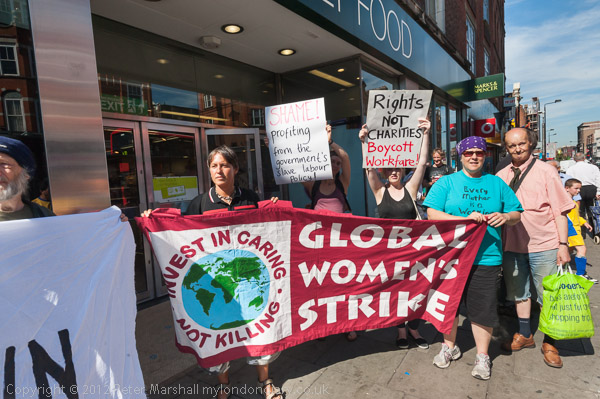
Many claimants unable to find paid work do find useful unpaid community activities they can volunteer for – and then are forced to give these up by workfare schemes.
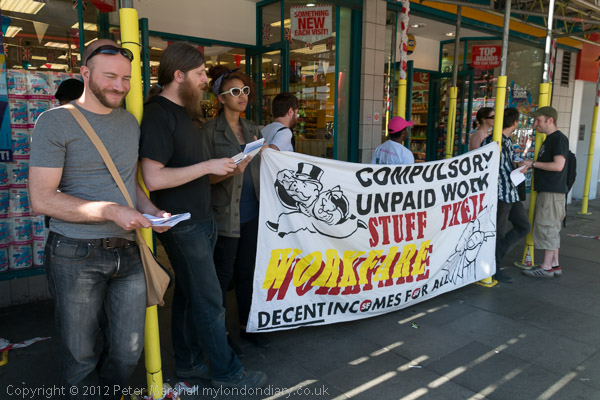
These schemes are supposed to provide work experience than can then lead to actual jobs, but many companies in the schemes use them simply as a source of free labour – which then then be replaced by new free workers when they come to and end of their period. Often there is no possibility of people on the schemes moving into paid work.
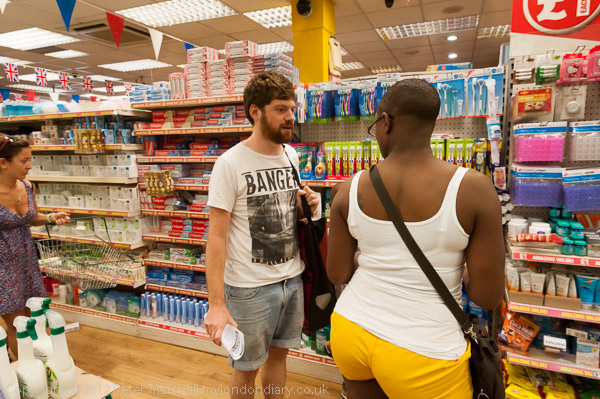
Among well known shops and charities making use of this unpaid labour in 2012 were Boots, Argos, Scope, Cancer Research UK, Poundland and British Heart Foundation, and the protests took place in front of a number of their shops. In Brixton protesters handed out leaflets inside Poundland.
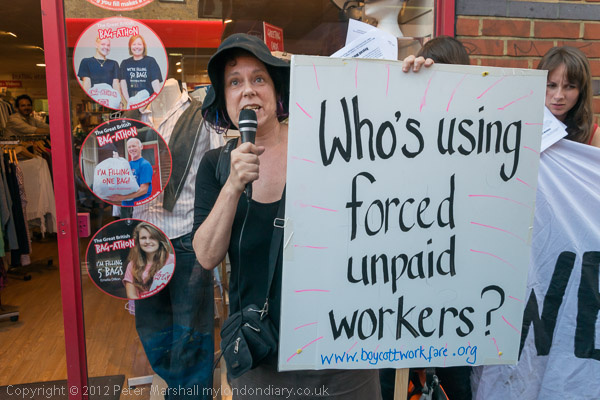
Protests against workfare had already had some effect with groups including Burger King, Oxfam, Waterstones, Shelter, 99p Stores, Pizza Hut and Sainsbury’s pulling out from the scheme.
More on My London Diary at Day of Action Against Workfare.
Ghanaian Methodists Celebrate 10 Years – Westminster Cathedral
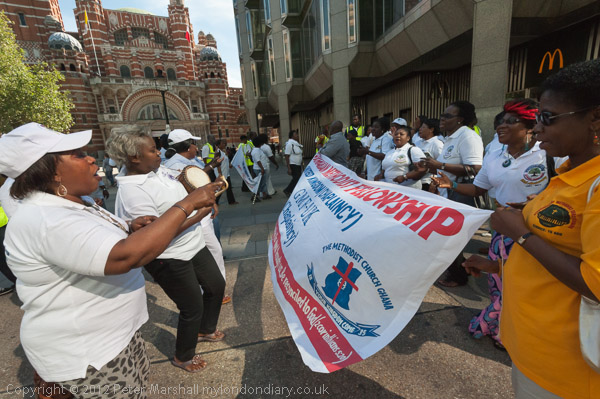
Celebrations of 10 years of the Ghanaian Methodist Fellowship UK and its 16 churches were to end in a thanksgiving service the following day. On Saturday the met at Westminster Catholic Cathedral and then danced away down Victoria Street towards Methodist Central Hall.
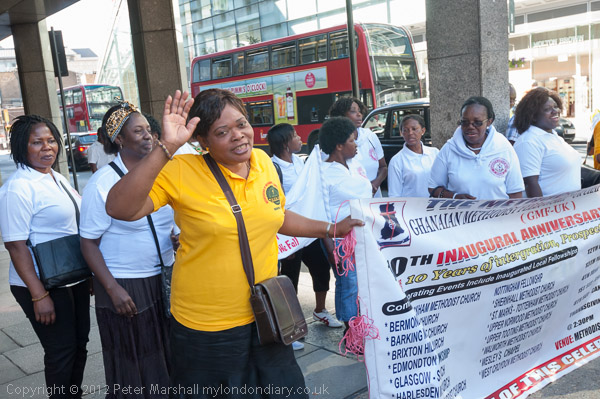
Methodism in the UK tends to be worthy and rather rather less exuberant, though with loud singing of hymns and much drinking of tea. There was a very different atmosphere at these dancing celebrations.
More pictures Ghanaian Methodists Celebrate.
Grow Heathrow Open Day – Sipson
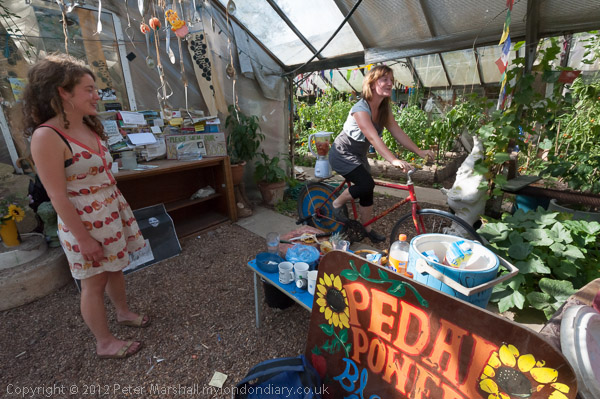
A journey to the end of the Piccadilly line and a short bus ride took me to Sipson where over two years ago Transition Heathrow moved onto the local eyesore and dumping ground of the former Berkeley Nursery site. This was an open day for their Grow Heathrow project.
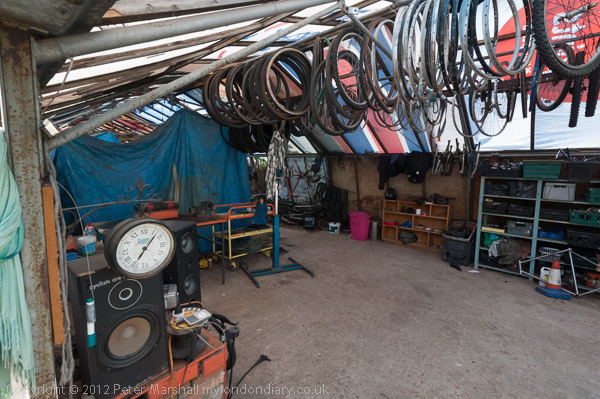
People had moved onto the site to fight against plans for a third runway at Heathrow, but realised the potential of the site to create a productive alternative off-grid home that would become a creative hub for the area.
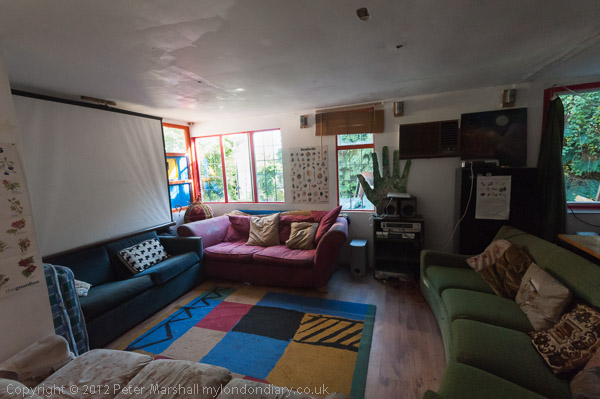
They started by clearing the rubbish and getting the local council to take away around 30 tons of it, but much of the material on site was a valuable resource that with a great deal of ingenuity they recycled for there own uses. Many built there own small temporary houses in the wilder areas of the site, though some were still then living in tents. And patched up part-ruined greenhouses and a couple of cabins on the site became communal spaces including a comfortable sitting area, a library and a vistor’s room.
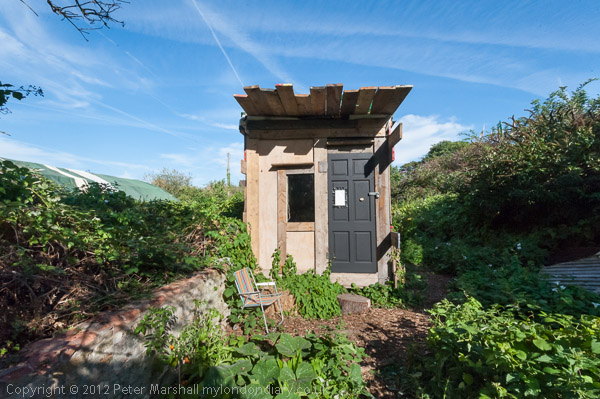
Their activities gained a great deal of support from the local residents and when the site owners gained permission to evict them they were granted leave to appeal on human rights grounds with the judge describing the site as as “much loved and well used” by the local community. The site was open to them and other visitors weekdays from 10am – 6pm and on Sunday afternoons.
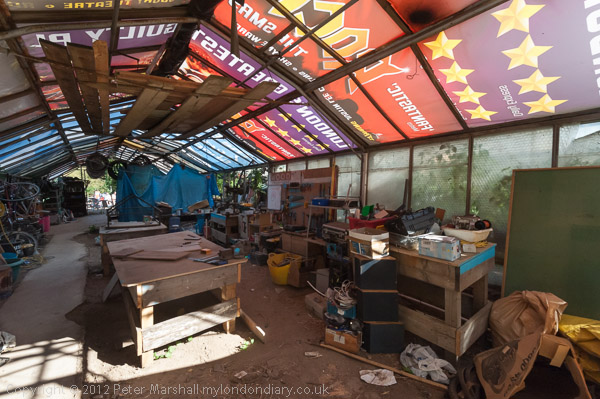
There are regular events every week open to anyone, including bicycle workshops, art workshops and gardening, and some of the results were impressive. Were it just a little closer to my home I’d be tempted to come here more often, but although it might be a pleasant place in Summer I think I would miss the comforts of my own home rather too much in winter. The wood-burning shower did look rather draughty even if the water was very hot.
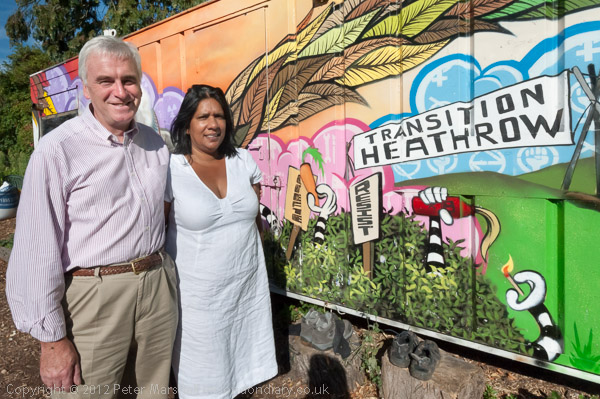
Among firm supporters of Grow Heathrow was local MP John McDonnell who stated “This inspirational project has not only dramatically improved this derelict site but it has lifted the morale of the whole local community in the campaign against the third runway and in planning a sustainable future for our area. We cannot lose this initiative and I will do all I can to enable it to continue.”
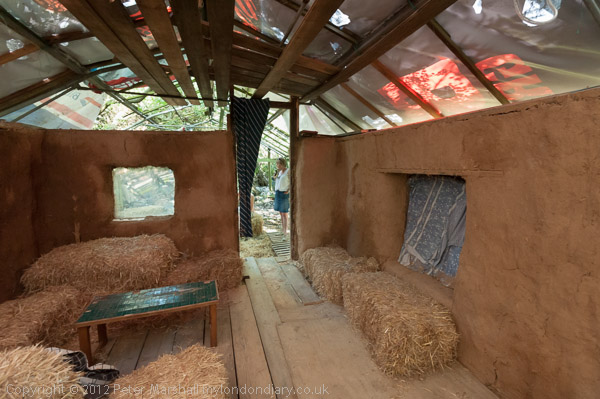
And continue it did for some years, surviving a number of legal challenges. Half of the site was reclaimed by bailiffs in 2019, but the final eviction only came in March 2021.
More at Grow Heathrow Open Day.




























































